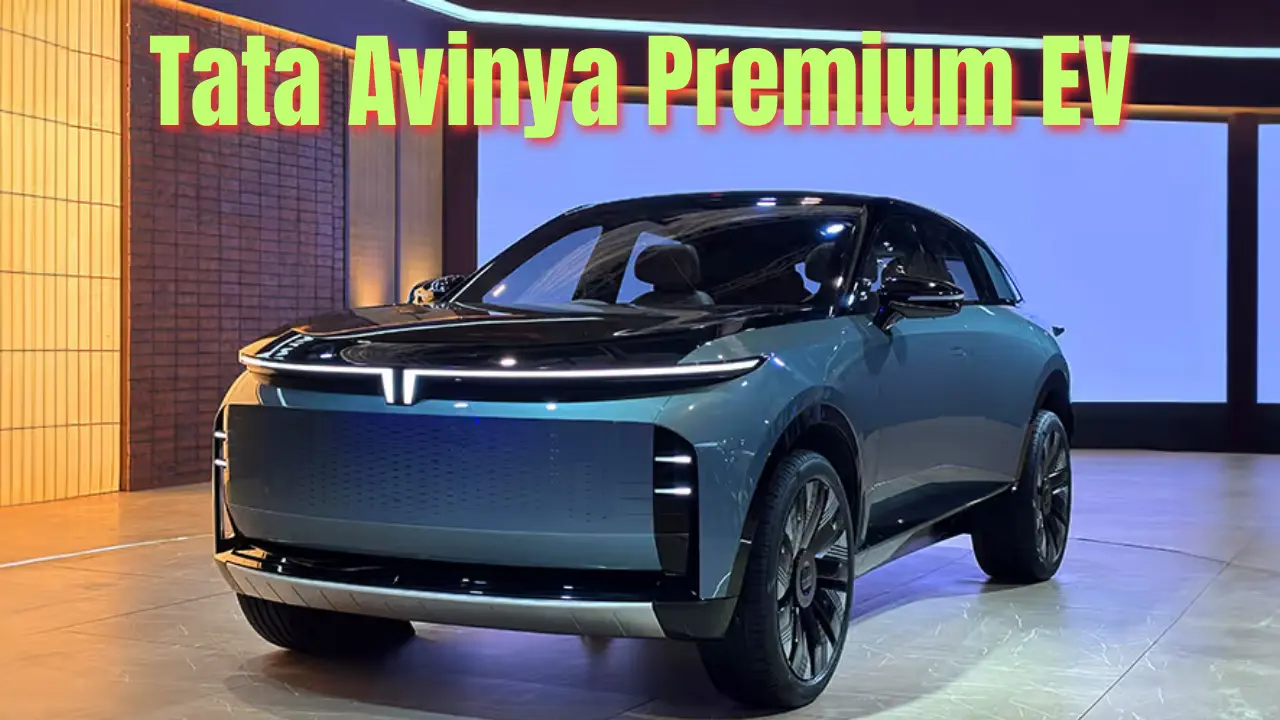Tata Motors has officially confirmed its ambitious Avinya electric vehicle brand will hit Indian roads by 2027, marking the automaker’s boldest step into premium EV territory yet.
The homegrown giant’s decision to create an entirely new brand signals its serious intent to capture the luxury electric segment, where it currently has no presence. With Tesla eyeing India and Chinese brands making inroads, Tata’s timing couldn’t be more crucial for maintaining its EV leadership.
Avinya Premium EV Design
The Avinya concept draws inspiration from catamarans, promising that perfect balance of agility and sophistication. Think sleek lines meeting muscular presence – it’s not your typical boxy SUV. The design team has crafted what they call a “mixology” approach, blending the best bits of premium hatchbacks, SUVs, and MPVs into one cohesive package.
The signature butterfly doors aren’t just for show – they’re a statement. These wide-opening portals welcome you into what Tata calls a “lounge-like” cabin experience. The T-shaped LED DRLs and closed-off grille scream futuristic efficiency, while the sloping roofline gives it that coupe-SUV swagger everyone’s chasing these days.
Interior: Screen-Free Zen Zone
Here’s where Tata’s really thinking different. While everyone’s cramming more screens into dashboards, Avinya goes the opposite route with a deliberately screen-free cabin. Instead of digital overload, you get voice-activated everything and an aroma diffuser that actually works to keep you calm during those Mumbai traffic jams.
The panoramic Sky Dome roof floods the interior with natural light, making the cabin feel more like a premium lounge than a car. Sustainable materials throughout the interior aren’t just eco-friendly box-ticking – they’re part of the sensory experience Tata’s promising.
Features
Built on Jaguar Land Rover’s EMA platform, the Avinya isn’t just borrowing tech – it’s getting the good stuff. The GEN 3 architecture promises structural safety that can handle Indian roads, plus waterproofing that laughs at monsoon floods.
Range anxiety? Not here. Tata’s targeting a minimum 500km on a single charge, with ultra-fast charging that’ll give you 80% juice in under 30 minutes. Vehicle-to-load capabilities mean your Avinya could power your home during those inevitable power cuts.
The advanced driver assistance systems and 360-degree cameras are standard premium fare, but Tata’s promising AI that works in the background to actually enhance your drive rather than annoy you with constant beeping.
Safety: Premium Protection
The Avinya comes standard with dual airbags across all variants, though expect higher-end trims to pack more safety tech. The EMA platform’s high structural safety standards should translate to solid crash protection, while the advanced waterproofing means your electronics won’t fry during the first heavy downpour.
Read Also: Nissan MPV and Maruti Mini MPV: Affordable 7-Seaters Launch Soon
Price: Premium But Accessible
Here’s where it gets interesting. Early estimates suggest the Avinya range will start around ₹30 lakh and stretch up to ₹60 lakh. The first P1 model launching in 2026 could command over ₹35 lakh, making it Tata’s most expensive vehicle yet.
That pricing puts it squarely against Tesla’s Model 3 (expected above ₹30 lakh) and premium offerings from BYD. Tata’s betting that Indian buyers will pay premium prices for a premium Indian brand – a bold gamble that could pay off big.
Launch Timeline: Patience Required
The Avinya journey starts with a sportback EV in 2026, followed by the full SUV lineup by 2027. Tata’s planning five models internally coded P1 through P5, with the P1 targeting 24,000 units annually.
Initially, these premium EVs will sell through existing Tata dealerships before potentially getting their own retail network. Smart move – leverage the existing infrastructure while building the brand.
With Maruti Suzuki finally entering the EV game and Chinese brands circling, Tata’s Avinya gambit comes at just the right time. Whether Indian buyers will embrace a premium Tata remains the million-rupee question.
